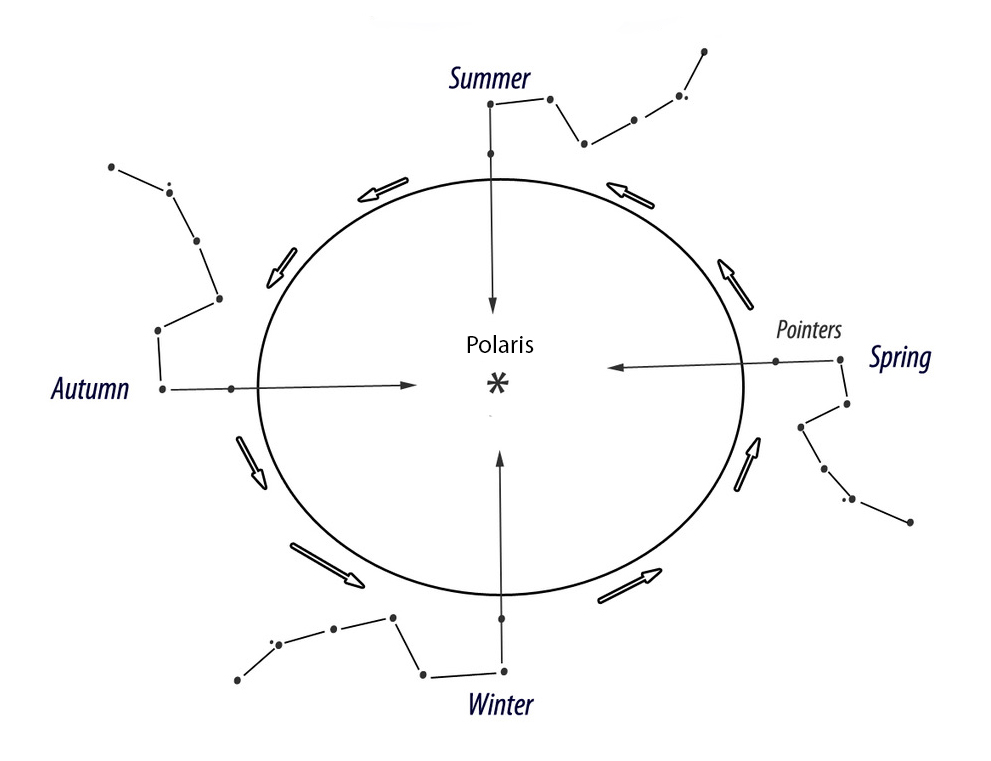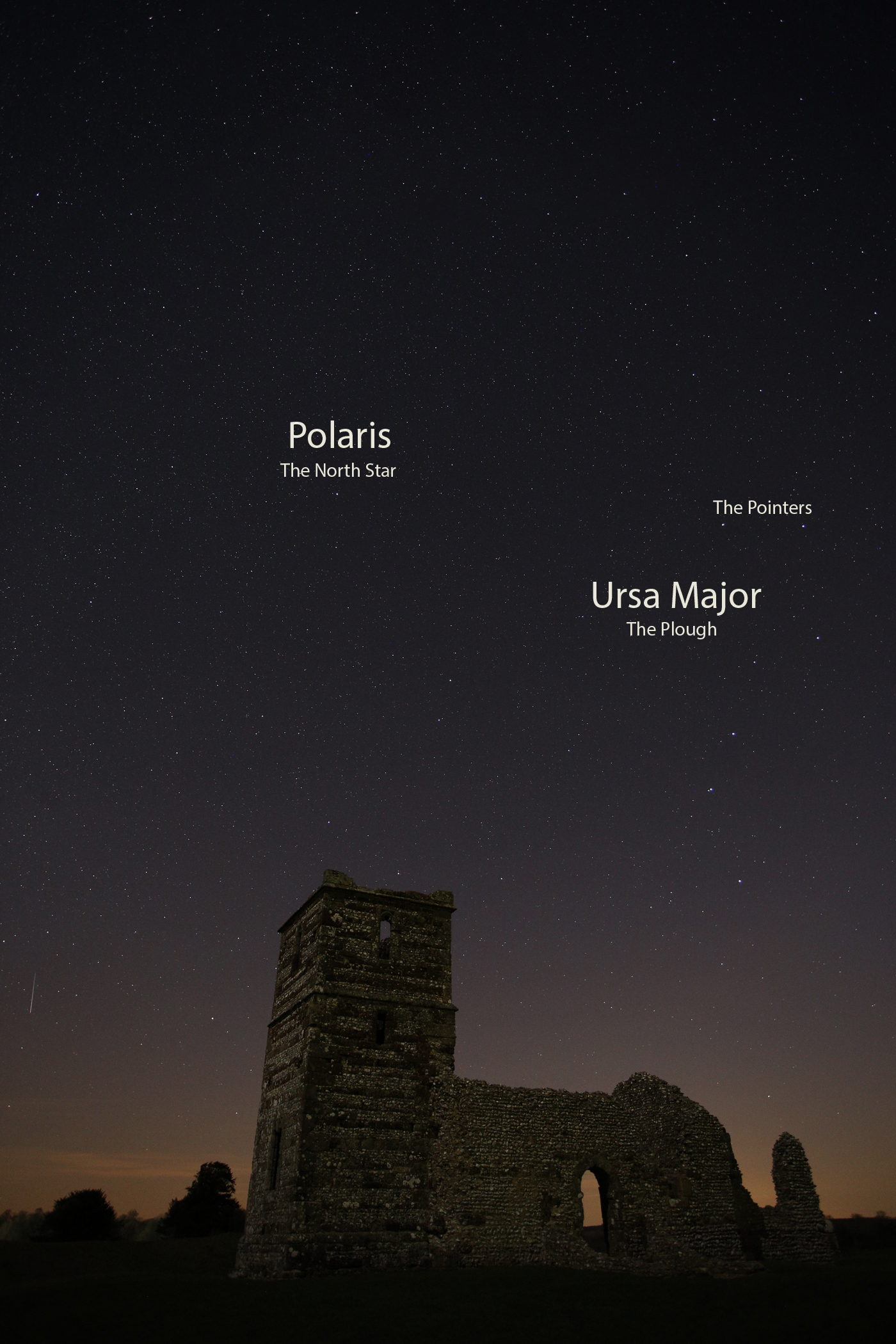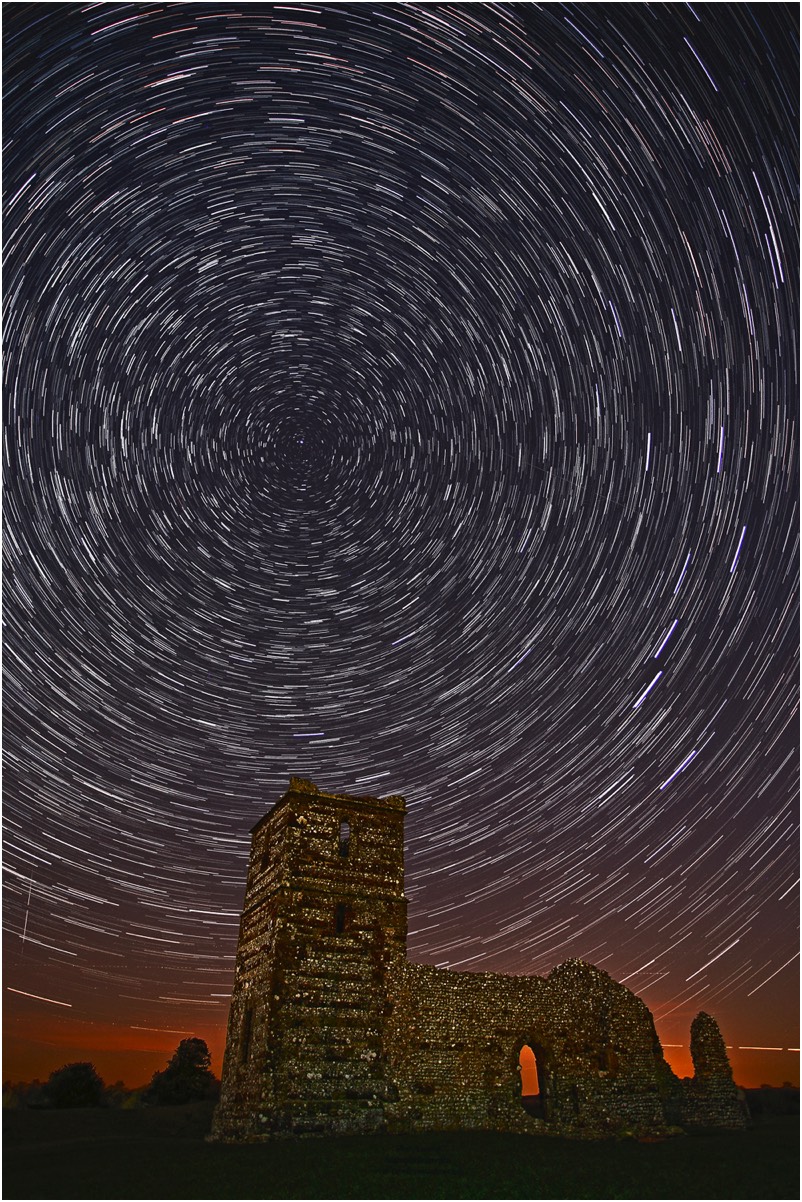To take a Star-Trail image in the Northern Hemisphere you will need to know where to find the North Star. The North Star is called Polaris, it is also known as the Pole Star. Polaris appears to stand still in time, and all the Stars and Constellations appear to revolve around it. Polaris itself is not a big bright star, but it can easily be found by using two of the stars from the Constellation Ursa Major the Plough these two Stars are known as the Pointers.
The pointers will always point towards Polaris, regardless of time of the night or the month of the year.
You do not need tracking to take a star trail image but a stable tripod is essential, you will need to use an intervalometer ( some cameras have this feature built in ), a wide angle lens ( 14mm to 24mm ) f2.8 or wider , ISO 800 -1600 and set the white balance to auto, and shoot in raw.
Plan your shoot to be away from street lights.
Take a 30 sec test shot if you are happy with your composition, set the intervalometer to 30 sec exposures with a 1 sec delay and take at least 120 images that amount will give you a pleasing final image.
There are quite a few processing apps available that will combine all your images together and produce a stunning star-trail image. StarStax is a free App for Windows and Mac.
Nighttime can become very cold even in the summer months make sure you have suitable clothing, a warm beverage and maybe a snack to nibble on while you are waiting for your exposure run to Finnish.
The pointers will always point towards Polaris, regardless of time of the night or the month of the year.
You do not need tracking to take a star trail image but a stable tripod is essential, you will need to use an intervalometer ( some cameras have this feature built in ), a wide angle lens ( 14mm to 24mm ) f2.8 or wider , ISO 800 -1600 and set the white balance to auto, and shoot in raw.
Plan your shoot to be away from street lights.
Take a 30 sec test shot if you are happy with your composition, set the intervalometer to 30 sec exposures with a 1 sec delay and take at least 120 images that amount will give you a pleasing final image.
There are quite a few processing apps available that will combine all your images together and produce a stunning star-trail image. StarStax is a free App for Windows and Mac.
Nighttime can become very cold even in the summer months make sure you have suitable clothing, a warm beverage and maybe a snack to nibble on while you are waiting for your exposure run to Finnish.


